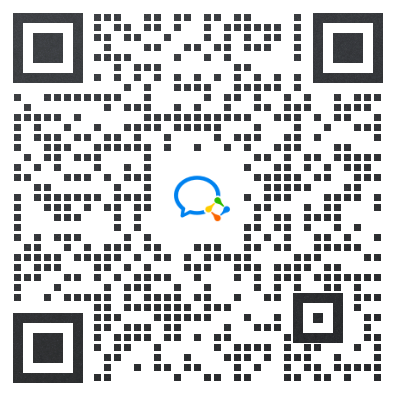Applying for a Partner Visa in Sydney? A Lawyer's Guide to Proving a "Genuine Relationship"
.jpeg)
Key Takeaways
The Core Challenge: A Partner Visa is not just about being in a relationship; it’s about proving the genuine and continuing nature of that relationship to the Department of Home Affairs.
The Four Pillars: All evidence is assessed against four key aspects: the financial, the household, the social, and the commitment aspects of your relationship.
Quality Over Quantity: A well-organised file with high-quality, consistent evidence is far more powerful than a large volume of disorganised, low-quality documents.
Common Traps: The most common reasons for refusal are insufficient evidence, inconsistent information across documents, and failure to properly explain complex relationship histories.
Does Love Really Need to be "Proven"?
"But we truly love each other. Why do we need so much evidence to prove it?" This is the question I hear most in my 15 years as a specialist partner visa lawyer. In my Sydney office, I’ve seen too many genuine couples face the heartbreak of a visa refusal simply because they didn’t know how to prove their relationship in the way the law requires.
The Partner Visa is the largest visa category by volume in Australia, with over 72,000 applications in the 2022-23 financial year. It is also one of the most scrutinised, with a high refusal rate.
Based on my experience with over a thousand partner visa cases, I know that every successful application is built on a perfect system of evidence. Today, I will share, without reservation, how to build an evidence package that convinces a case officer.
Understanding the Partner Visa Categories
Choosing the right pathway is the first step to success.
Onshore Partner Visa (subclass 820/801): For applicants who are in Australia when they apply. This allows you to stay in Australia on a bridging visa while the application is processed. The first stage (820) is temporary, and the second stage (801) is permanent.
Offshore Partner Visa (subclass 309/100): For applicants who are outside Australia when they apply. You must wait outside Australia for the first stage (309) to be approved before you can enter.
My Professional Advice: The main advantage of an onshore application is the ability to remain in Australia. However, this requires that your relationship is already well-established and stable at the time you apply.
Learn more about partner visas at the Department of Home Affairs website.
The "Four Pillars" Evidence Framework
The Department of Home Affairs assesses every partner visa application against four core pillars. Understanding and structuring your evidence around this framework is the absolute key to success.
Pillar 1: The Financial Aspects of Your Relationship
The core question: Do you share financial responsibilities and resources like a genuine couple?
Golden Evidence Checklist:
Essential: A joint bank account showing at least 6-12 months of regular, shared income and expenses.
Strong: Joint loans (mortgage, car loan), a joint lease agreement, or a property title in both names.
Good: Naming each other as beneficiaries on superannuation and life insurance policies.
Supporting: Joint utility bills (gas, electricity, internet), and evidence of one partner financially supporting the other (e.g., paying for tuition fees).
Pro Tip: Simply opening a joint account is not enough. Case officers want to see a history of it being used for your shared life—groceries, rent, bills, and savings. Regular, consistent use is the key.
Pillar 2: The Nature of Your Household
The core question: Do you live together and share domestic life like a genuine couple?
Golden Evidence Checklist:
A joint lease or proof of joint property ownership.
Correspondence addressed to both of you at the same address over time.
Statements outlining how you share household chores and responsibilities.
Evidence of joint purchases for your home (e.g., furniture, appliances).
Records of joint subscriptions (e.g., Netflix, Spotify).
Pillar 3: The Social Aspects of Your Relationship
The core question: Are you accepted and recognised as a genuine couple by your friends, family, and the public?
Golden Evidence Checklist:
Statutory Declarations (Form 888s): Statements from Australian citizen/PR friends and family confirming your relationship is genuine.
Photos: A collection of photos together over time, especially with friends and family at social events (weddings, birthdays, holidays).
Joint Travel: Itineraries, flight tickets, and hotel bookings from trips you’ve taken together.
Joint Invitations: Invitations to events addressed to you as a couple.
Social Media: Evidence of your public relationship, such as your relationship status and photos together.
How to Write a Powerful Form 888: The best Form 888s are specific. Instead of saying, “They are a loving couple,” a strong statement says, “I have known them for 3 years. Last Christmas, they hosted a dinner at their home for all our friends. They clearly share household duties and are planning a future together.”
Pillar 4: The Nature of Your Commitment
The core question: Do you have a deep knowledge of each other and a genuine intention to be in a committed, long-term relationship?
Golden Evidence Checklist:
Personal Relationship Statements: This is your chance to tell your story. Each of you must write a detailed statement outlining how you met, how the relationship developed, your key moments, how you overcame challenges, and your plans for the future.
Evidence of Future Plans: Concrete plans for marriage, buying a home, or having children.
Wills: Having wills that name each other as beneficiaries.
Communication Records: A sample of your communication (texts, chat logs) from throughout your relationship, especially while apart.
Common Refusal Traps and How to Avoid Them
Trap 1: Weak or Insufficient Evidence
Mistake: Providing only a few photos and a joint bank account with no activity.
Solution: Prepare evidence systematically across all four pillars, covering the entire timeline of your relationship. Quality is better than quantity.
Trap 2: Inconsistent Information
Mistake: The dates in your personal statements don’t match your travel records. Your answers in an interview contradict your application.
Solution: Create a detailed relationship timeline and cross-check every document against it before you lodge.
Trap 3: Poorly Explained Complex Histories
Mistake: Hiding a previous marriage, not explaining a significant age gap, or having a very short relationship before marriage without sufficient explanation.
Solution: Be completely transparent. Proactively explain any complex aspects of your relationship and provide extra evidence to support it. For complex cases, professional legal help is a must.
When to Seek a Specialist Immigration Lawyer
While it’s possible to lodge a simple case yourself, I strongly recommend seeking a lawyer if your situation involves:
A complex relationship history (e.g., significant age gaps, cultural differences, previous visa refusals).
Difficulty gathering sufficient evidence across the four pillars.
Any character (criminal record) or health issues.
You need help responding to a Request for Information (RFI) or an interview request from the Department.
Facing a visa refusal? Learn how to appeal with our guide: A Sydney Immigration Lawyer’s Guide to the AAT Appeal Process.
Frequently Asked Questions (FAQ)
For de facto partners, the Department of Home Affairs generally requires you to provide evidence that you have been in a committed relationship for at least 12 months immediately before lodging your application. However, this 12-month requirement can be waived if you have registered your relationship with an Australian state or territory government (e.g., in NSW or VIC), or if you are married.
The partner visa has one of the highest government application fees. As of mid-2025, the base application charge is over $8,850 AUD. On top of this, you must budget for other costs, such as health examinations (approx. $500 per person), police clearances from all countries you’ve lived in, and professional fees if you use a lawyer or migration agent.
Yes. When you lodge a valid onshore partner visa application, you will typically be granted a Bridging Visa A (BVA). This visa allows you to remain lawfully in Australia while your application is being processed and usually comes with full work rights.
This is a complex situation. Generally, you must remain in a genuine and continuing relationship to be granted the permanent visa. However, there are limited exceptions. If the relationship has ended but there are children of the relationship, or if you or a family member have been a victim of domestic violence committed by your partner, you may still be eligible for the permanent visa. You must seek urgent legal advice in this situation.
For immigration purposes, the evidence required is very similar. Both married and de facto applicants must prove their relationship is genuine and continuing across the four pillars. The main difference is that a legal marriage certificate is a strong piece of evidence for the “commitment” pillar, and it waives the 12-month minimum relationship requirement that applies to de facto couples who have not registered their relationship.
.jpeg)
Your True Relationship Deserves the Perfect Proof
After 15 years in this field, I understand that every couple applying for a partner visa is full of hope for their future. While the Department’s requirements are strict, success is absolutely achievable with a systematic approach to your evidence.
Remember these key points:
The Four Pillars are not optional; they are the foundation of your case.
Quality, consistent evidence is more persuasive than a large volume of random documents.
Honesty and transparency are your best policies.
For complex cases, professional help is an investment in your future.
Your relationship is genuine. Let us help you prove it perfectly.
AHL Legal: Your Partner in Proving Your Relationship
Applying for a partner visa? At AHL Legal, our specialist immigration lawyers provide expert guidance to build a strong evidence package and navigate the partner visa process.
Secure Your Future with Expert Legal Support
Proving a genuine relationship for a partner visa requires careful preparation and strong evidence. Don’t risk a refusal.
At AHL Legal, we provide specialized support to build a compelling case across the four pillars and guide you through the application process.
✅ AHL Legal: Your Trusted Legal Partner
Our experienced team is dedicated to providing clear legal guidance and defending your case under Australian law.
📞 Ready to take action? Call us at 1300 91 66 77 for a consultation
🌐 Visit our website: www.ahllegal.com



 1300 91 66 77
1300 91 66 77







 HOME
HOME


